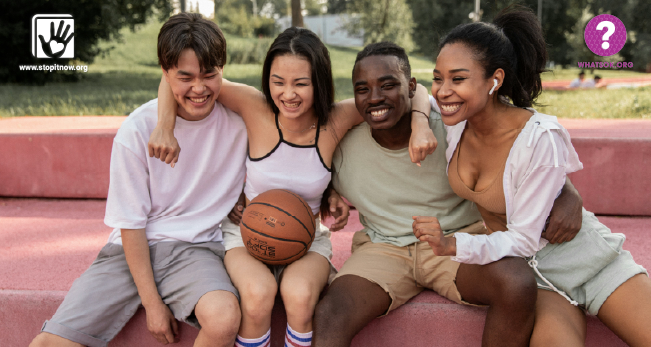The Impact of a Youth Advisory Council
Blog #6
By: Joan Tabachnick, MBA & Jenny Coleman, LMHC

One of the basic tenants of organizing, marketing, or community outreach is to listen to the people you want to reach. Before you develop messaging or ask your audience to change their behavior, you need to listen to what they want, what they need, and who they want to listen to.
Why did Now! organize a Youth Advisory Council?
After listening to many helpline calls from youth, Stop It Now! created WhatsOK: a resource for youth ages 14-22 to ask questions and find information about concerns they have about sexual abuse, sexting, pornography, or other youth with a confidential online helpline available via text, chat, email, or phone. To guide this work, Stop It Now! created a Youth Advisory Council to ensure that we heard directly from youth by inviting them to review our materials. Taking this a step further, Stop It Now! worked with two interns this summer to help us think through how to reach their peers (this population's cohort) with messages about the WhatsOK program.
How did Now! organize a Youth Advisory Council?
Our Youth Advisory Council is composed of youth and young adults whose ages have ranged between 15 and 27. Members on the council have been mixed-gendered and racially diverse. Some members—who started their journey with Now! while still in high school—have been a part of this project since its beginning in 2021, and have since moved onto college or the workforce.
Youth joined our council for a variety of reasons. Some were recruited from a high school group focused on preventing sexual assault among peers, some were in a treatment group for problematic sexual behaviors, and a young person incarcerated for viewing child sexual abuse material was also involved. All council members wanted to help make a difference for young people.
What did Now! learn from the Youth Advisory Council?
Briefly, what we learned from the Youth Advisory Council is that young people will reach out for help and want easy access to this information. Ensuring confidentiality is vital for participants and for creating a safe and ethical research environment. Creative communication methods are valuable for building trust and facilitating engagement while establishing clear boundaries is essential for maintaining respect throughout the interactions.
Our interns helped us to see that even the students who agree with our messages may have a hard time sharing information about WhatsOK because it raises the question: “Why are you sharing this?” Our interns heard from friends that sharing a post about WhatsOK might be viewed as simply performative (which is negative). For others, it may raise more personal questions about whether they have experienced sexual abuse or been accused of sexual misconduct in their friend group.
When asked how to move beyond these limitations, our interns suggested that linking onto a current trend, even a humorous one, can offer a reason for sharing. We experimented with one current trend that played with the ignorance of others as an opening to sharing our important information. Our interns also explored the possible influencers in this space so that we can approach them to help share our messages. They helped us identify some influential individuals outside of our professional circles who shared our values and could be helpful in showing how our worlds (and different communities) connect. And this also showed, yet again, how important it is for each of us to talk with our audiences as we explore ways to reach out to others.
A research study
The Center for Violence Prevention Research interviewed young people with lived experiences of problematic sexual behaviors (PSB). The findings of this participatory research is documented in: Involving Young People with Lived Experiences of Problematic Sexual Behaviors. This study highlights how to involve a vulnerable, at-risk community of young people in both research and program development.
Thank you to our wonderful Youth Advisory Council and summer interns who help open our eyes to these ideas and concepts, so that we can prevent child sexual abuse, especially by youth.


